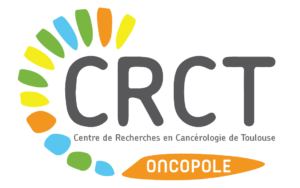Some papers including some from our group suggested that the organization of DNA and the genome is like a network. Networks are systems in which many units interact with each other (friends connecting on social media, cities connected by roads, neurons connected in the brain etc…) and they can be studied using a mathematical framework called ‘network theory’. We used these methods to understand the ways in which different DNA regions are organized inside the cellular nucleus (2 metres of DNA are wrapped inside each cell!).
In this paper we present two tools that can be used by researchers interested in studying the structural and functional organization of DNA. GARDEN-NET is a website on which users can explore the 3D organization of genes in different cell types, like a map of the metro inside the nucleus in which lines tell you if two genes are close in space. The second is a bioinformatic package (ChAseR), which allows researchers to perform more advanced analyses. Researchers can use these tools to give context to their own observations on the properties of chromatin.
Using these tools, we have confirmed and detailed how the way the DNA is wrapped on itself inside the nucleus is related to the characteristics and behaviour of different types of cells. For example, different cells that make up the immune system have different networks of DNA and many cellular processes (gene expression, DNA replication and others) can be better understood when considering the characteristics of these networks.
Some of the mutations encountered in cancer affect the parts of the genome that code for proteins, for which we know the effect is to potentially break this protein and compromise its function in cellular processes. However, many more mutations are found in regions of the genome that do not correspond to proteins and occur instead in regions which act like switches for genes. The genes being switched on or off can have equally important consequences for the cancer as the breaking of a protein. The complication is that switches can be very far away from their genes when looking along the genome, but by looking at how the genome is folded on itself we can see which switch is affecting a specific gene.
The paper presents a number of computer tools to investigate the folding of DNA which will allow researchers to discover how the folding changes in the different cell types that make up blood, or how it changes in leukemias, cancers originated by blood cells.
Découvrir l’article publié :
Nucleic Acids Res. 2020 May 7;48(8):4066-4080.
Using GARDEN-NET and ChAseR to Explore Human Haematopoietic 3D Chromatin Interaction Networks
Miguel Madrid-Mencía, Emanuele Raineri, Tran Bich Ngoc Cao, Vera Pancaldi
Key Words :
- Chromatin,
- epigenomics,
- network theory,
- hematopoiesis
Contact :
Vera Pancaldi/Nina Verstraete
Team 21
Mail : vera.pancaldi@inserm.fr
One picture :

GARDEN-NET et ChAseR sont deux outils qui permettent aux chercheurs, avec ou sans expertise en bioinformatique, d’analyser leurs résultats dans un contexte 3D de la chromatine vue sous forme de réseau.

